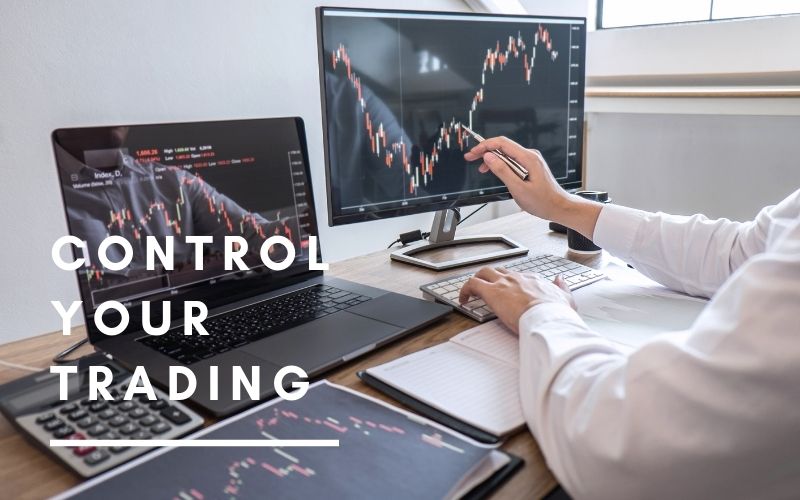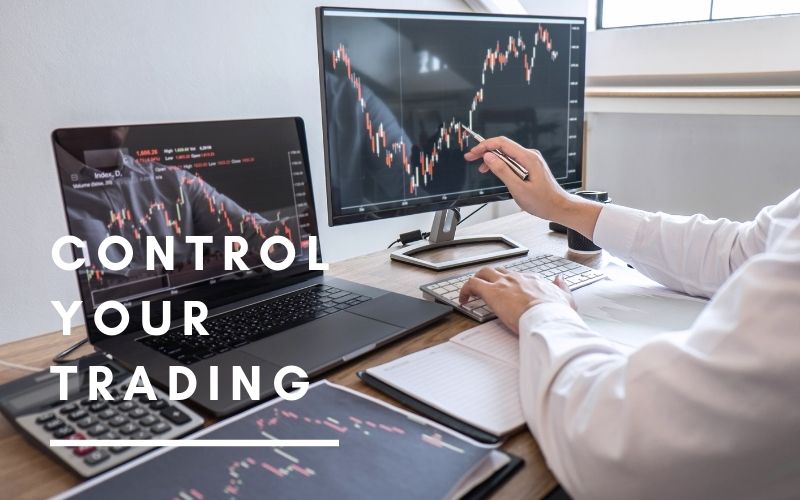If a trade is profitable or not, I have no control over it. I enter orders as part of my job. No more, no less!
Take Control Of Your Trading
In my own trading experience as a swing trader, I take away two main ideas from this quote:
Focus on all the aspects of trading that you can control.
When you are inactive trade, you need to trust your methods, strategy, system, and system despite giving up control. As long as you focus like a laser on the aspects within your control, you will over time arrive at a positive outcome.
As a trader, you must concentrate on areas that you can control. Trading is fascinating (yet frustrating) because of how complex it is. There are so many moving parts…there is so much that can go wrong that it only takes a little to sabotage your trade.
If you want to win, you have to look at the areas where you have control and make sure that you do not let leaks sink your boat.
- How can you control certain areas as a trader?
- Decide on your overall trading strategy before you start trading
- Discover your personality…what drives you? You should consider any weaknesses or blind spots you may have. What are your favorite trading strategies, for example?
- Do you scale small amounts?
- Are you buying breakouts?
- What are pullbacks?
- Are you following the trend?
- Are you buying gaps?
- Gaps fading?
- …etc…
- How well does your trading strategy match your personality?
Your trading plan should be documented
Make a trading plan and document it. Write it down. There may be very few details, but the more, the better.
You should remember, however, that it’s not set in stone either.
You may need to make changes to certain areas you notice. This document is alive and breathing.
A trading plan is obviously important as well! In all my trading plans, the last line says: “Follow your plan and adjust as needed.”
Decide on your risk level and Take Control Of Your Trading
Taking time in advance to determine how much of your portfolio you can risk can help you minimize losses. Your level of risk tolerance might have a great deal to do with this.
Generally, you should not risk more than 1-2% per trade.
Risk management is probably THE most important aspect of trading, according to my experience. The goal should be to avoid losing money. You will see profits if you use a trading strategy and plan that has a positive outlook.
Spend time figuring out what risk strategy is right for you.
Follow your trading routine and make sure you’re always on top of things
Follow a consistent routine every week and every day.
When I trade swings, I do the following:
Review of active trades is done early in the morning (before the market opens) in order to assess if any adjustments are needed, such as moving up buy stops, whether a trade is performing as expected, etc.
Taking positions that look the most promising from the prior afternoon (before the market opens) – Decide on your positions by the morning.
Day of trading – Entry or exit of any trades
A review of the new results from stock filters is conducted in the afternoon (after the market closes); ideal trades are decided upon. You should identify ideal trading candidates and analyze their charts, calculate risk versus reward, entry and exit points, and size your positions accordingly.
I like to learn and read during the weekends (mainly early in the morning). My trading methods are fine-tuned and adjusted as I become better.
Trading before the market opens
Risk vs. reward for each potential trade should be analyzed.
Swing traders use a strategy called “stalking the trade” to find investments they think will grow and pivot higher when they enter a position. This is done by looking at a timeframe above and below the one I chart daily.
Creating a process for yourself that you follow every time will help you find your best method. My sell-stop is set once I’m in a trade. It is okay if you stick to a mental stop if you can make sure to stick to it.
As the trade was taking place Take Control Of Your Trading
You need to trust your process or method at this point. Ensure that you have done everything you can to set yourself up for success.
It doesn’t matter if that trade loses, because you followed your process and did your best. Trading involves losses.
It is important for you to have faith in your plan and take comfort in knowing that your plan has been tested and has proven effective.
However, you still have control over your emotions, even if you are at the mercy of the market. I don’t have to check every single tick when I’m swing trading.
Also Read
Retail Investors Vs Institutional Investors



